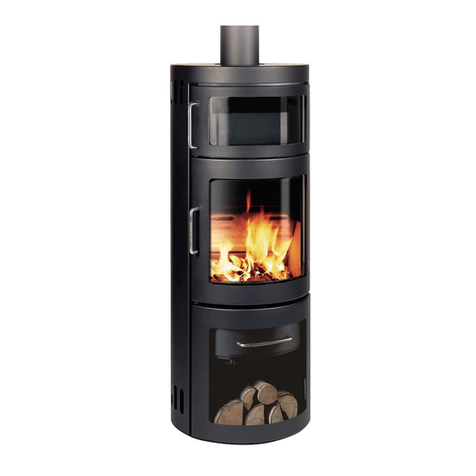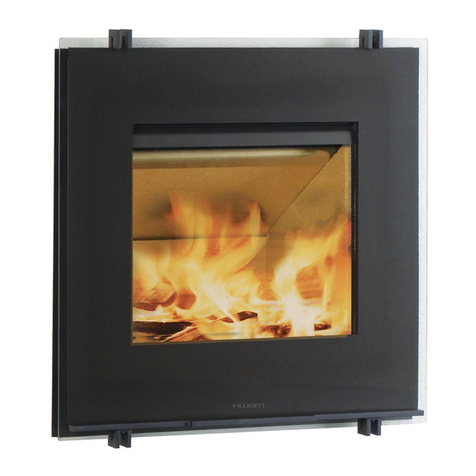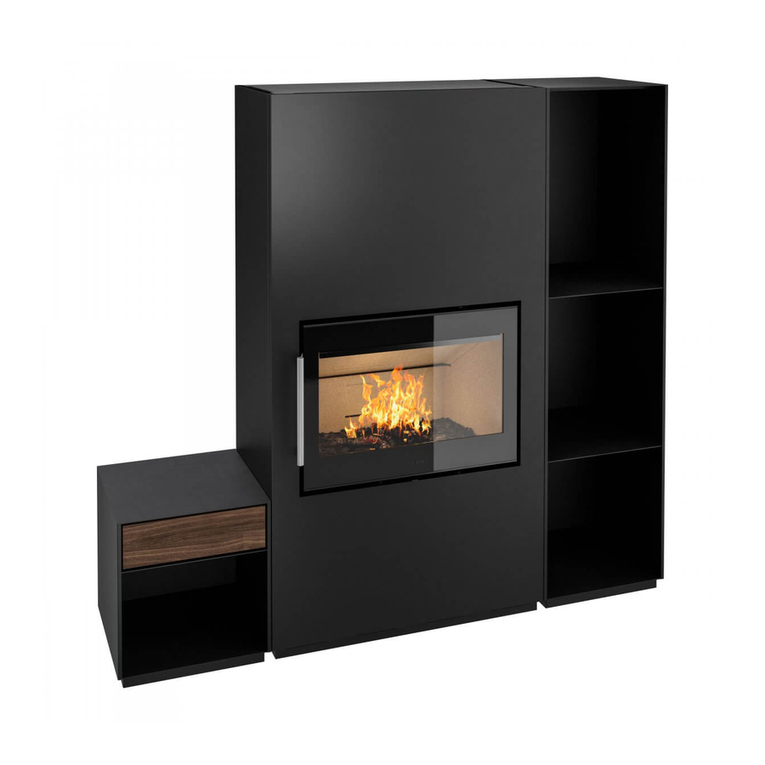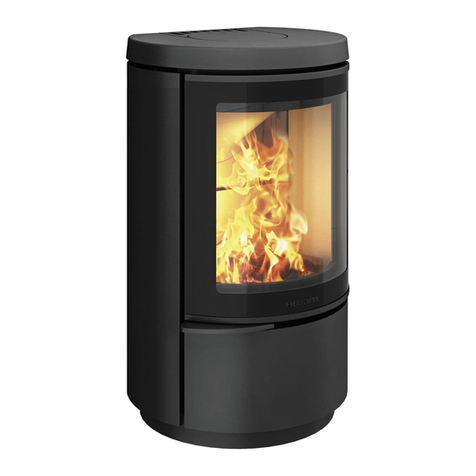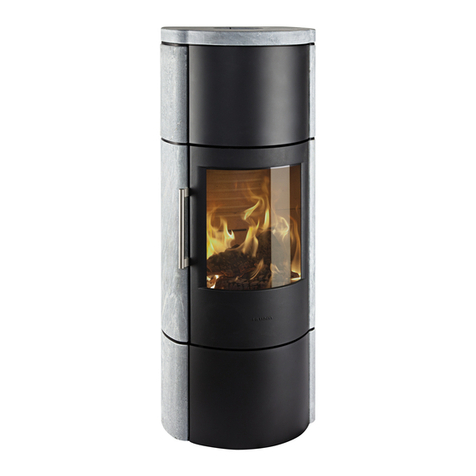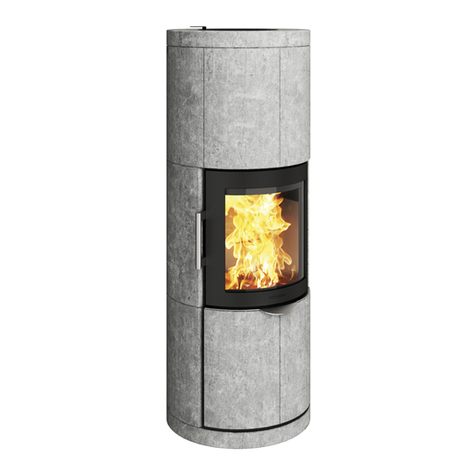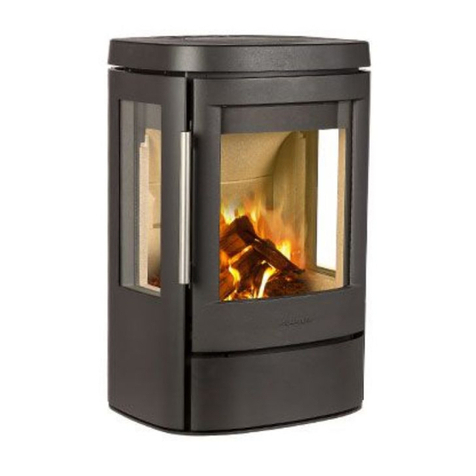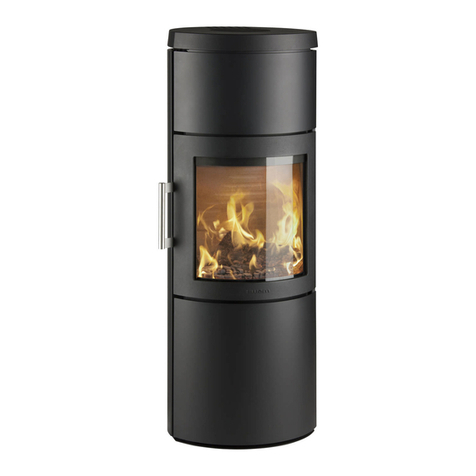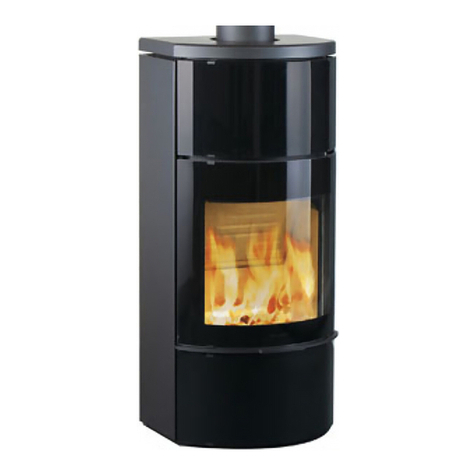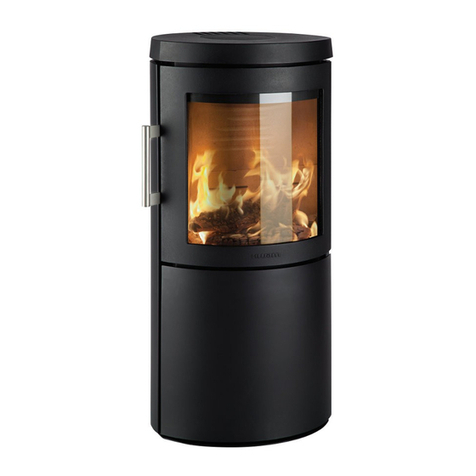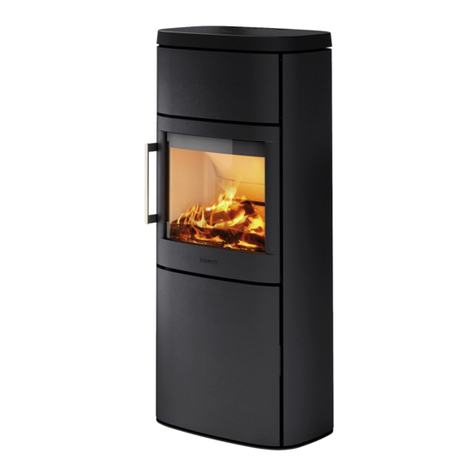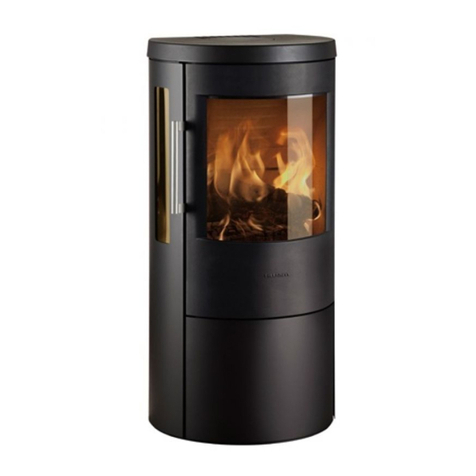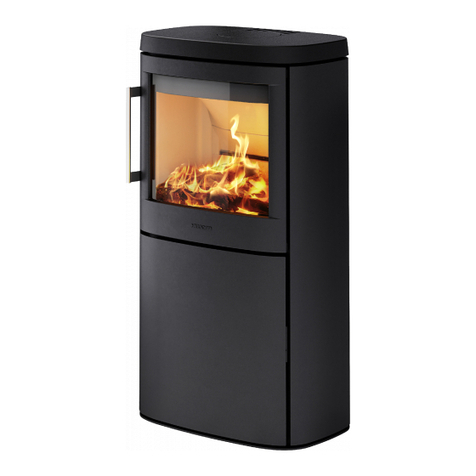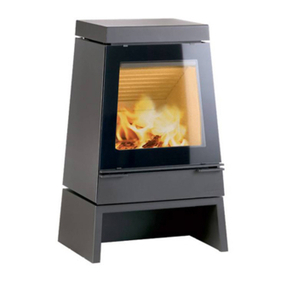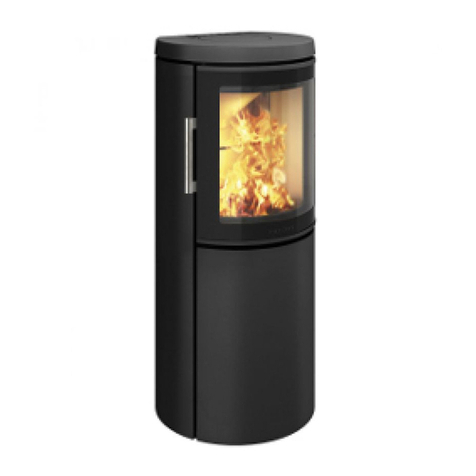
10
Min. distances - uninsulated ue gas pipe:
(drawing A)
With steel cladding With stone
cladding
HWAM 4530
HWAM 4550
HWAM 4540
HWAM 4560
HWAM 4540
HWAM 4560
1. Recommended for brick wall, back, cm 10 10 10
2. Recommended for brick wall, side, cm 30 10 10
1. For inammable wall, back, cm 10 10 10
2. For inammable wall, side, cm 59 35 40
1.To inammable wall, corner installation, cm 33 7 7
3. Distance to furnishings in front, cm 120 110 110
Please be aware that not all glass parts are heat-resistant. For this reason, a glass wall should sometimes
be treated as a ammable wall, in which case we ask you to contact your local chimney sweep or glass
producer to hear at what distance the stove should be kept from glass.
Take note of the applicable regulations for the distance between the wall and ue pipe.
The distance to a brick wall is set to faciliate the servicing of the Autopilots system.
Requirements for chimney and smoke pipe
The chimney must be of a sufcient height to enable an adequate draft and to prevent smoke problems.The
stove requires a draft of at least 12 Pa.
The chimney must have a minimum opening equivalent to Ø 15 cm. The chimney opening should always
be at least the size of the outlet socket of the stove.The chimney must have an easily accessible soot door.
Smoke pipe and chimney must always be suitable for a stove connection. Ask your HWAM dealer for more
information.
Changing the ue outlet from a top outlet to a rear outlet (drawing H)
Steps 1 and 12 only apply to the HWAM 4550 and HWAM 4560.
1. Remove the heat storage area front (1) by lifting the front and pulling away from the stove.
2. Lift the top plate (2) off the stove.
3. Remove the rear plate (3) by loosening the two screws (4).The rear plate has a cut-out for the ue
pipe. Cut out the plate (5) within this cut-out.
4. The heat shield has a cut-out for the ue pipe. Cut out the plate (6) within this cut-out.
5. Remove the cover plate (7) on the rear of the stove (behind the cut-out plate in the heat shield) by
removing the three screws (8).
6. Remove the smoke ring (9) above the combustion chamber by removing the three screws (10).
7. Place the smoke ring (9) in front of the ue outlet hole on the rear of the stove and afx using the
three screws (10).
8. Place the cover plate (7) so that it closes the ue outlet on top of the combustion chamber (where
the smoke ring was just removed) and afx using the three screws (8).
9. Place the rear plate (3) on the guide taps (11) on the rear side of the stove's base plate and afx the
rear plate using the two top screws (4).
10. Lie the top plate (2) on the stove.
11. Place the cast-iron or stone top cover (12) in the hole in the top plate.
12. Re-attach the front (1) to the heat storage area.
Fitting the loose parts
Before the stove is installed,you must ensure that all loose parts are tted correctly.Check that all insula-
tion plates of the combustion chamber have been properly placed, i.e. that the bottom plate is horizontal
and that the side plates are vertical and reach all the way up to the steel sides of the combustion chamber
and down to the bottom plate.






